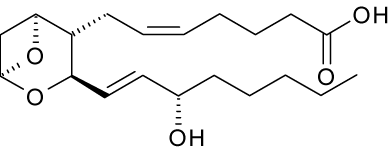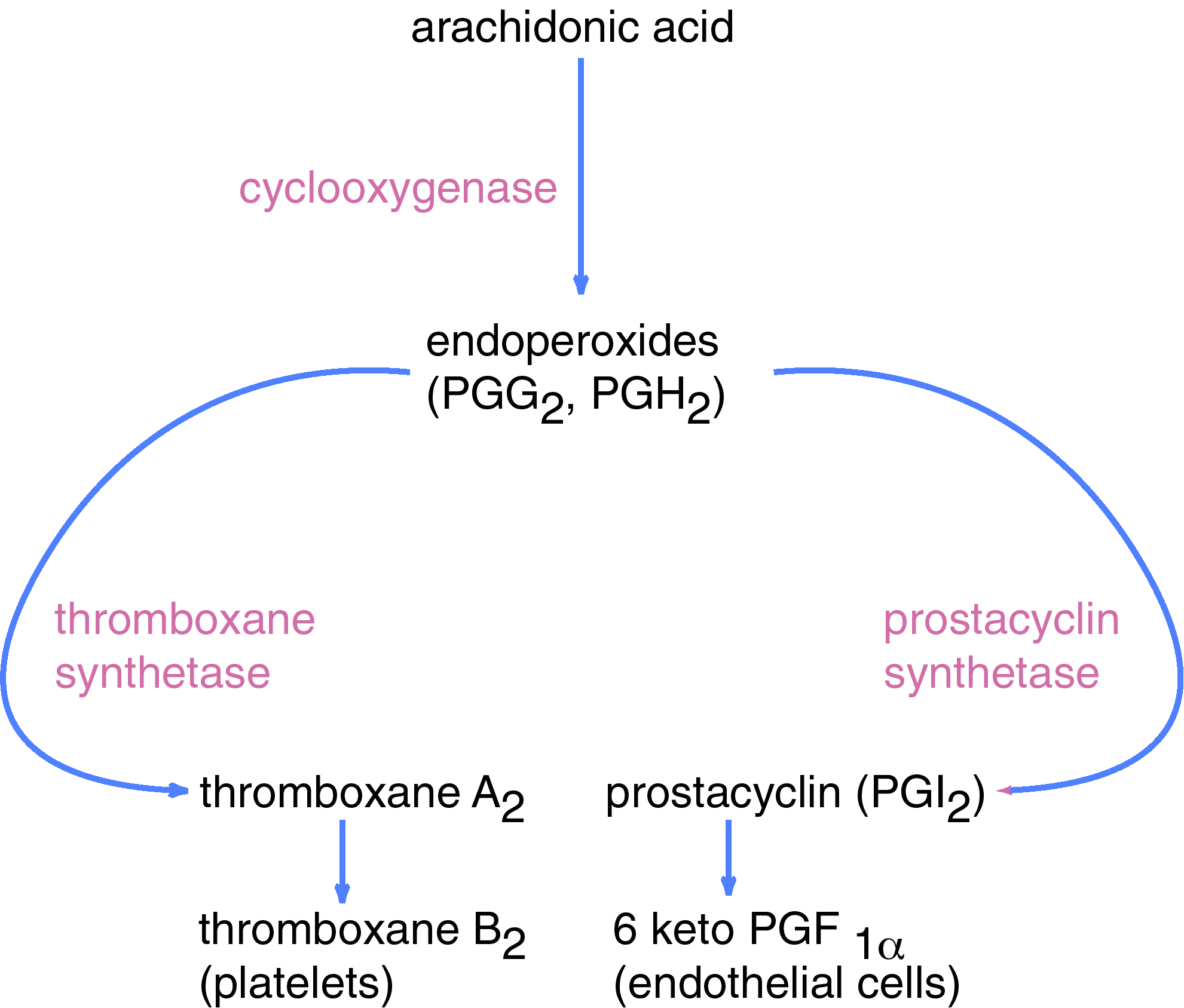Thromboxane
|
WikiDoc Resources for Thromboxane |
|
Articles |
|---|
|
Most recent articles on Thromboxane Most cited articles on Thromboxane |
|
Media |
|
Powerpoint slides on Thromboxane |
|
Evidence Based Medicine |
|
Clinical Trials |
|
Ongoing Trials on Thromboxane at Clinical Trials.gov Clinical Trials on Thromboxane at Google
|
|
Guidelines / Policies / Govt |
|
US National Guidelines Clearinghouse on Thromboxane
|
|
Books |
|
News |
|
Commentary |
|
Definitions |
|
Patient Resources / Community |
|
Patient resources on Thromboxane Discussion groups on Thromboxane Patient Handouts on Thromboxane Directions to Hospitals Treating Thromboxane Risk calculators and risk factors for Thromboxane
|
|
Healthcare Provider Resources |
|
Causes & Risk Factors for Thromboxane |
|
Continuing Medical Education (CME) |
|
International |
|
|
|
Business |
|
Experimental / Informatics |
Overview

Thromboxane is a member of the family of lipids known as eicosanoids. The two major thromboxanes are thromboxane A2 and thromboxane B2.
Thromboxane is named for its role in clot formation (thrombosis).
Production

It is produced in platelets by thromboxane-A synthase from the endoperoxides produced by the cyclooxygenase (COX) enzyme from arachidonic acid.
Mechanism
Thromboxane acts by binding to any of the thromboxane receptors, G-protein coupled receptors coupled to the G protein Gq[1].
Functions
Thromboxane is a vasoconstrictor and a potent hypertensive agent, and it facilitates platelet aggregation.
It is in homeostatic balance in the circulatory system with prostacyclin, a related compound. The mechanism of secretion of thromboxanes from platelets is still unclear.
Role of A2 in platelet aggregation
Thromboxane A2 (TXA2), produced by activated platelets, has prothrombotic properties, stimulating activation of new platelets as well as increasing platelet aggregation.
Platelet aggregation is achieved by mediating expression of the glycoprotein complex GP IIb/IIIa in the cell membrane of platelets. Circulating fibrinogen binds these receptors on adjacent platelets, further strengthening the clot.
Pathology
It is believed that the vasoconstriction caused by thromboxanes plays a role in Prinzmetal's angina.
Suppression
The widely used drug aspirin acts by inhibiting the ability of the COX enzyme to synthesize the precursors of thromboxane within platelets.
It inhibits the COX enzyme both non-competitively and irreversibly.
The side effect of this is that people who regularly take aspirin will suffer from excessive bleeding whenever the skin is perforated.
External links
- Thromboxanes at the US National Library of Medicine Medical Subject Headings (MeSH)